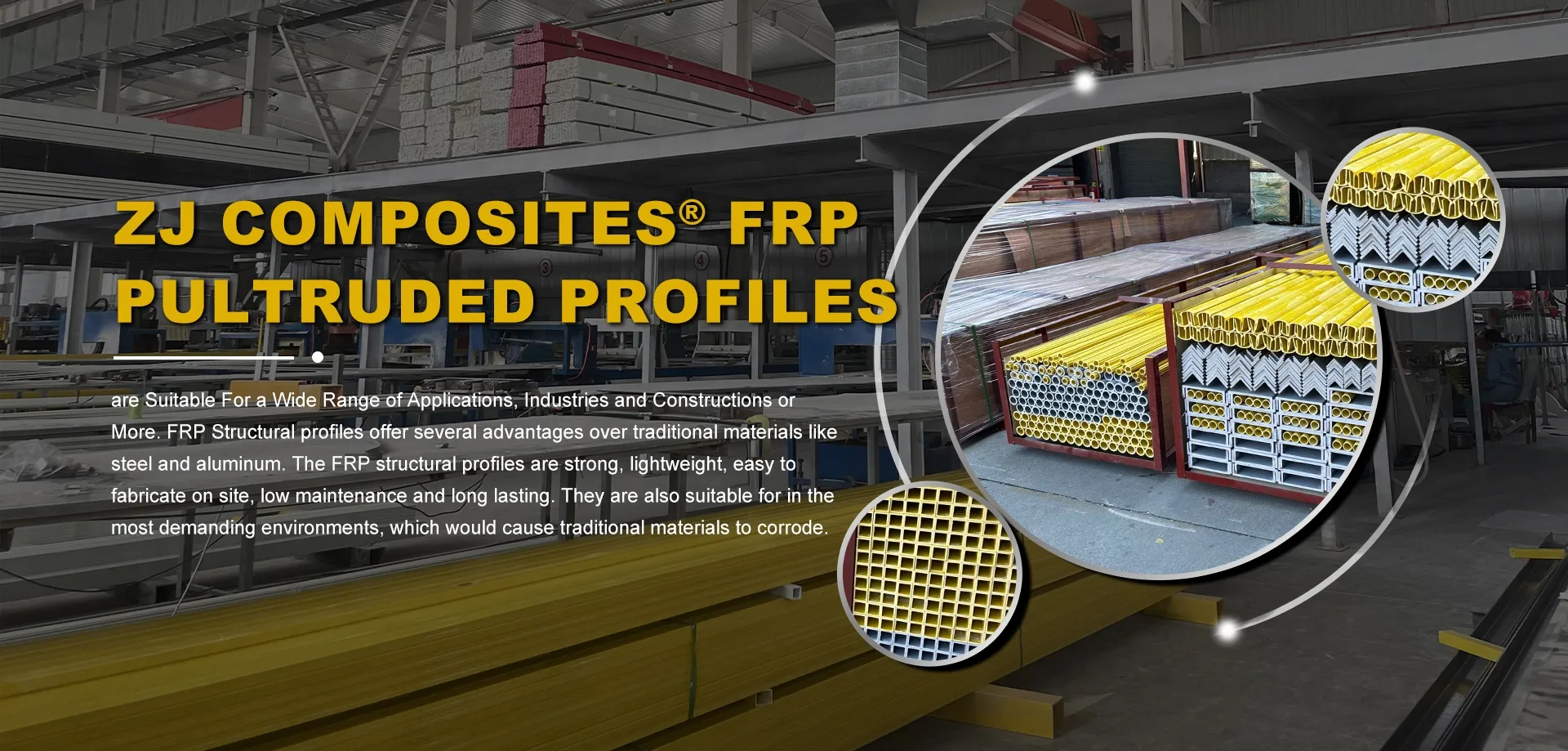loading...
- No. 9, Xingyuan South Street, Dongwaihuan Road, Zaoqiang County, Hengshui, Hebei, China
- admin@zjcomposites.com
- +86 15097380338
- Welcome to visit our website!
grating frp
The Role of Grating FRP in Modern Construction
Fiber Reinforced Plastic (FRP) grating has emerged as a revolutionary material in the construction and engineering sectors. Due to its unique properties, FRP grating stands out as a lightweight, corrosion-resistant alternative to traditional materials like steel and aluminum. This innovative solution has found applications in various industries, including chemical processing, wastewater treatment, and marine environments, where exposure to harsh conditions is common.
The Role of Grating FRP in Modern Construction
In addition to its corrosion resistance, FRP grating is remarkably lightweight, which simplifies the installation process. This feature is especially beneficial in projects where transporting heavy materials can pose logistical challenges. The ease of handling and installation means that labor costs can also be reduced, as fewer manpower hours are needed to complete assembly. Furthermore, the lightweight nature of FRP grating minimizes the load on existing structures, allowing for versatile applications in both new constructions and renovations.
grating frp

Safety is another critical aspect where FRP grating excels. It offers a slip-resistant surface, which is particularly important in environments where spills may occur, such as in industrial settings. Many FRP grating options are designed with a textured finish to enhance traction, thus improving workplace safety and reducing the risk of accidents.
Sustainability is becoming increasingly important in modern construction practices, and FRP grating contributes positively to this trend. The manufacturing process for FRP materials typically involves less energy compared to traditional materials, and many FRP products are recyclable. Choosing FRP grating for construction projects aligns with the growing emphasis on environmentally friendly building practices.
In summary, grating FRP is an innovative material that provides numerous advantages in the construction industry. Its corrosion resistance, lightweight nature, safety features, and sustainable attributes make it a practical and economical choice for a variety of applications. As industries continue to evolve and seek out more efficient solutions, the use of FRP grating is likely to expand, shaping the future of construction materials and methods.
-
GRP Structures: The Future of Lightweight, High-Performance EngineeringNewsJun.20,2025
-
FRP Water Tank: High-Performance Storage for Corrosive and Clean Water SystemsNewsJun.20,2025
-
FRP Square Tube: The New Industry Standard for Chemical and Structural ApplicationsNewsJun.20,2025
-
FRP Pultruded Profiles: The Ultimate Choice for Lightweight Structural StrengthNewsJun.20,2025
-
FRP Handrails: The Safer, Smarter, and Stronger Choice for Modern InfrastructureNewsJun.20,2025
-
FRP Grating: The Smart Solution for Durable, Lightweight Industrial FlooringNewsJun.20,2025
-
Why Choose a Galvanized Water Tank for Your Storage NeedsNewsMay.21,2025
